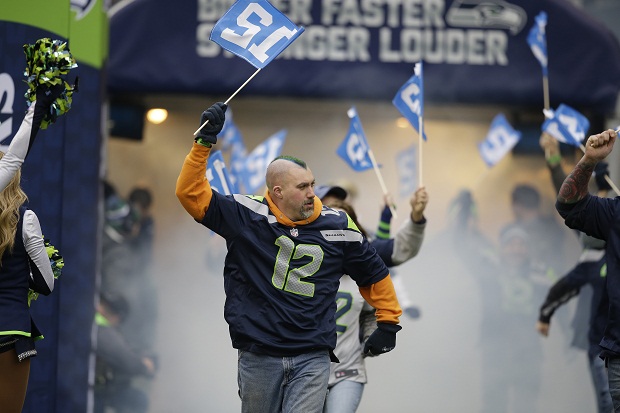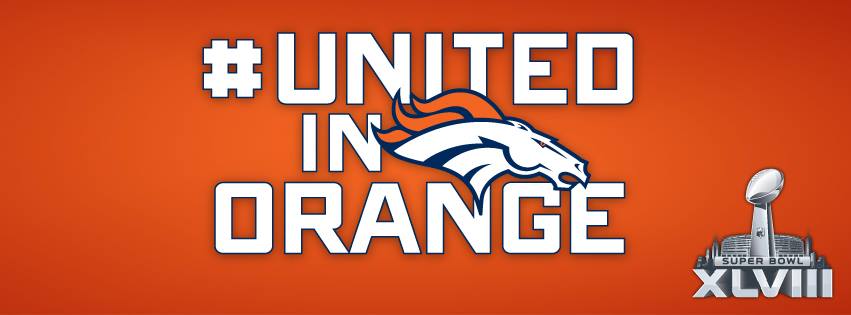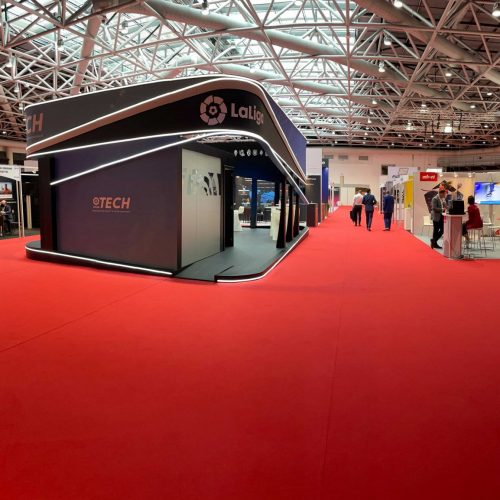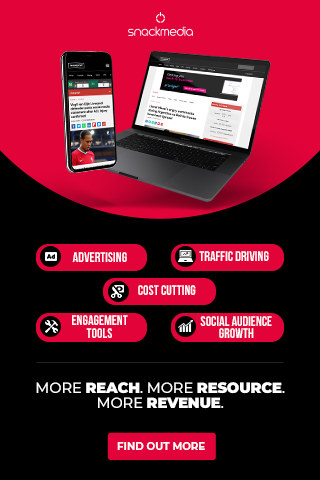The Digital Super Bowl
Guest Post: Aaron Jaffrey (@aaronjaffery) is Managing Director of Digital Sport Consultancy NineteenEightyFour.
On Sunday 2nd February, arguably the biggest game in the American sporting calendar was played in New Jersey. Super Bowl XLVIII proved to be a one-sided display of dominance – finishing 43-8 in favour of the Seahawks. However, the successful digital strategies of both teams on the run up to, and during, the Super Bowl cannot be so easily separated.
NFC Champions the Seattle Seahawks came into Super Bowl XLVIII with a 13-3 record in the regular season, a joint best in the franchise history, and reached New Jersey as the Number 1 ranked seed going in the playoffs.
From the AFC, the Denver Broncos also boasted a 13-3 record and were officially named the best offensive team in the league by becoming the highest-scoring team in NFL history, with quarterback and offensive leader Peyton Manning earning his fifth MVP award for the season.
And whilst taking very different approaches to their digital communications, the online performance of the Seahawks and the Broncos is on a par with their on-the-field performances during the regular season.
The Seattle Seahawks
The Seahawks strategy seems to be about building anticipation before the game, and in the week leading up to Super Bowl XLVIII after their NFC Championship game, the Seattle Seahawks rolled out an impressive volley of digital content.
Although lacking in any specific fan engagement campaigns or competitions – somewhat surprisingly, considering their renowned ‘12th Man’ fan base that commandeer an entire section of the homepage – the official site was regularly updated with the latest news stories, exclusive video footage, and preparatory stats comparisons and round-ups. The majority of these features, were shared across their social media channels, wherein lies the most engaging of the Seahawks’ online activity.
While Facebook and Twitter were used concurrently in the Seahawk’s digital campaign on the run up to the Super Bowl, Seattle did not simply repeat the same content on both channels.
Facebook, boasts the larger of the two social media fan bases with 1,597,754 fans, and was utilised to generate a sense of anticipation before the game. Much more of the official website content was shared on the newsfeed than its Twitter equivalent, all focussed on driving engagement and fan the passion of fans for the forthcoming game; for example video content such as ‘How to Stop Peyton Manning’; a meme-based daily countdown; and their ‘#SB48 Preview’ series that looks specifically at the performance stats of comparable Wide Receivers, Cornerbacks, Tight Ends, etc. from both teams.
The Seahawks’ Facebook account also elevates the visual above its Twitter counterpart: providing greater access to exclusive photo albums like ‘#SB48 Monday’s Media Session’ and the ‘Super Bowl Send-Off’, and making specialised Super Bowl wallpaper available for download.
With a greater advertising capacity for video links, Facebook is naturally the better option for the Seahawks to share the majority of their website content, as well as their official Super Bowl anthem ‘Seahawks State of Mind’, a parody of the famous Jay-Z and Alicia Keys song in honour of the game being held in New Jersey.
Maybe the Seahawks could have capitalised more on engagement opportunities – perhaps coining ‘competition Wednesdays’ as a prize-giveaway campaign as well as the globally-trending name given by Pete Carroll to his Wednesday training sessions, which are famously difficult as he pits the best offensive line against his best defensive line.
Twitter, on the other hand, seems to function for the Seahawks more as a digital medium for written promotional activity. Perhaps the most distinctive feature of the Twitter feed, in comparison to the Facebook homepage, is its more natural capacity for succinct live match commentary during the game itself: which, in part, seems to account for the rise of 49,785 followers on Super Bowl Sunday itself, taking the total number of followers up to 479,785 by February 3rd.
This is a method used by the majority of sports teams, however, and while the Seahawks seem to have done this successfully it does not exactly mark out their digital strategy from the crowd.
What is distinctive is that Seattle have created a separate Twitter account for all promotional activity, offers and competitions, under ‘@winSeahawks’. This has 208,000 followers in its own right, and provides supporters with access to offers from local partners – 50% off Papa John’s with a valid game ticket, free small slurpee and bag of jerky at Western Washington 7-elevens, etc. – as well as organising competitions for the chance to win more enticing prizes: the last campaign advertising a football signed by quarterback Russell Wilson for one winner who signed up to ‘Hawk Mail’ via the official website.
More than a separation of commercial activities from content, the @winSeahawks account is used to activate fan-engagement. The #TGIBFWinner hashtag capitalises on the trending #TGIBF across all the official Seahawks Twitter accounts, which stands for ‘Thank God It’s Blue Friday’ – the name given to every Friday before a Seahawks game throughout the regular season, which encourages fans to wear blue in support of their team.
The @winSeahawks account expands on this premise by calling its followers to upload pictures or videos of themselves showing this support for the Seahawks by wearing their blue NFL jerseys in interesting locations or accompanied by funny anecdotes, with the most eye-catching being re-tweeted on the official Twitter feed. They have translated the famous ‘12th Man’ presence from Seattle into the online environment using social media.
Whilst not especially original or innovative, the use both their core social channels very effectively. The official @Seahawks Twitter page capitalises on its celebrity fan base by re-tweeting supportive messages from famous personalities such as Patrick Stewart, Macklemore, and Bill Gates – who organised the construction of a human blue #12 flag in the Redmond Stadium, in partnership with Microsoft, and took an aerial photograph for the Super Bowl advertisement campaign.
In addition to publicising their famous support base the Seahawks also worked with official kit sponsors Nike to create inspirational memes to convey a sense of personality, pride and anticipation before the Super Bowl game.
Furthermore, Seattle’s fans want their voices to be heard, and this is something that the Seahawks – attributing their defensive success in leading the NFL this season to the record-breaking vocal support of the ‘12th Man’ – understand. Seattle recognise that Twitter is the ideal medium for this.
The very fact that the Seahawks have designated a separate page to fan engagement demonstrates a savvy approach to keeping their promotional activity associated with the frequent news and updates available through the official account, yet sustains a degree of separation so that they do not dilute the content of the main Twitter feed with offers and competitions.
<Summary>
Seattle’s Facebook campaign focused on conjuring a greater sense of anticipation in preparation for the Super Bowl game on February 2nd, whilst their use of Twitter displayed a greater preoccupation with fan engagement and promotional activity. Perhaps it was these slight differences in the Seahawks’ online approach that contributed to their successful digital turnover.
Indeed, the Seahawks boasted an impressive expansion of their digital outreach: with a 29% rise in their Facebook following during the monthly period between January 3rd and the day after the Super Bowl game; their Twitter followers also increasing by 37% during the same time. Although some may attribute the success of this growth in their online support to their complete supremacy during the Super Bowl game itself and their new status as champions, it is interesting to note that their fans on Facebook rose by 20%, and on Twitter by 23%, before February 2nd. The Seahawks’ use of social media was obviously attractive in its own right.
Denver Broncos
For the Denver Broncos, social media functions as a foundation on which to build the sense of an online community. Their impressive #OrangeHerd campaign, which was launched across both Facebook and Twitter on the day before the Super Bowl fixture, encouraging fans throughout the world to upload photos of themselves and their friends wearing the famous orange NFL jerseys and stating where they will be watching the Super Bowl from.
There was a particular push for fans from Massachusetts, Alabama and Florida to get involved, as part of the ‘Rock Your Jersey’ campaign on the Broncos’ official website: which attempts to digitally colonise as much of the map of the US with orange jerseys as possible before the Super Bowl.
For fans attending the Super Bowl itself, the Broncos’ channels also provided an occasion for personal interaction, by arranging a group photo of as many Denver supporters as were willing, next to the statue of the charging bull outside Mustang Sally’s in New York City on February 1st. Somewhat surprisingly, this photo was not utilised on its channels post-game.
This was arguably a missed opportunity for the Broncos to further promote this sense of community amongst their fans. If the group photo had been uploaded to Facebook, for instance, every fan included could have tagged themselves: meaning that they would not only feel a sense of inclusion in the Super Bowl experience, but also that the photo itself would be shared onto each individual newsfeed – achieving a far greater digital outreach.
However, Denver do seem to recognise the importance of online advocacy to the overall success of their strategy: something demonstrated by the simple, yet effective, encouragement of their fans on Facebook to make the official meme of the team’s trending hashtag #UnitedInOrange their profile picture, as well as sharing the meme onto their newsfeeds.
Just as the MetLife stadium stands were filled with a community of orange-wearing fans during the Super Bowl game itself, the online support for the Broncos also marked their territory in the digital environment with the colour that somewhat defines their franchise. In their implementation of social media, Denver seemed most intent on conveying this sense of unity.
An in contrast to Seattle, Denver implemented an online Super Bowl-specific competition. The ‘Helmet Hunt’ was advertised across Facebook and Twitter, and challenged fans to identify a series of famous New York landmarks pictured with a visiting Denver Broncos helmet. Entrants participated via the Broncos’ official website for a chance to win an official jersey signed by cornerback Champ Bailey.
The competition was relatively simple and easily accessible and helped to create a sense of anticipation before the Super Bowl game by being based in New York City, as well as providing a real incentive for fans to get involved and digitally support their team.
And whilst similarly to Seattle, Denver used Twitter competently for extensive match commentary during the game itself, another clear difference was Denver’s use of Vines on Twitter.
The globally-trending seven-second videos were used to capture key moments leading up to the Super Bowl on the day itself: such as preparations in the locker room, warming up, and the #TimeToRide vine of the Broncos coming onto the field at the start of the game, which was retweeted 1,311 times and made favourite by 741 followers. Vine was something that the Seahawks did not explore in their own campaign, and allowed Denver to tap into a whole new network of online consumers.
<Summary>
Statistically, the amount of online support that Denver obtained during this period is on par with to Seattle. Facebook seemed the more appealing of the two social media channels for Broncos fans, increasing by 20% from January 3rd and attracting 2,408,829 by February 3rd – 811,075 more than the Seahawks. Denver also came out on top on Twitter after a rise of 16% in their following meant they had acquired 7,977 more fans than Seattle, taking their total to 487,762.
It is interesting that Denver maintained this digital supremacy despite their defeat in the Super Bowl; for both Twitter and Facebook, the most dramatic increase of fans occurred in the 24-hour period during and just after game day.
In part, this may be attributed to the fact that the Broncos have been more successful than the Seahawks as a franchise: winning two consecutive Super Bowls during the 1998 and 1999 seasons. However, it may also be the result of the engaging online campaign from Denver.
While Seattle capitalised on the high-profile nature of the Super Bowl by focusing their digital campaign on boosting the feeling of anticipation surrounding the game, Denver concentrated on imparting a sense of fan community in their online environment.
And, whilst it is something of a shame that Denver were defeated so persuasively by the Seattle Seahawks on February 2nd 2014, as a result of their innovative campaigns and focus on driving fan interaction, it was perhaps the Broncos that were the true digital Super Bowl XLVIII champions.
About author
You might also like
SPORTEL 2021: Day One Recap
This year’s prestigious SPORTEL convention kicked off in sunny Monaco today, welcoming a host of familiar faces as well as plenty of new ones. Doors opened at 8:30am with businesses
Six Founding Riders Set To Bring The Vision Of The UCI Track Champions League To Life
Olympic Champions, UCI World Champions and World Record holders join the new track cycling competition debuting in November 2021 The UCI Track Champions League is delighted to announce that six
Sports related spending to soar this summer as pre-pandemic life resumes
New insights from eBay Ads UK reveal the potential for brands to engage with an excited but nervous nation as sports events get back on track As pubs and indoor












